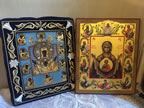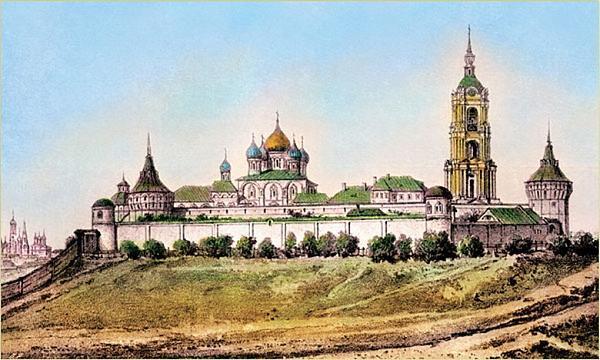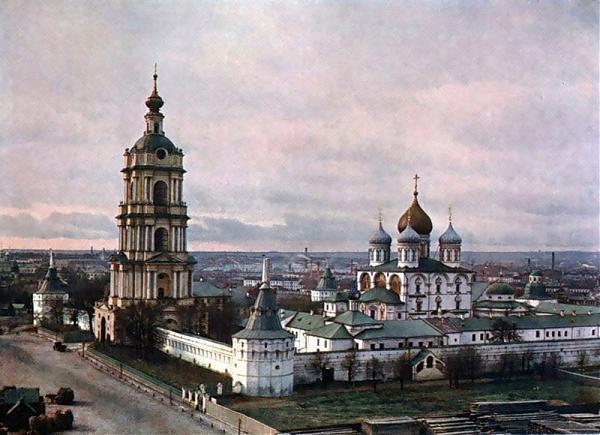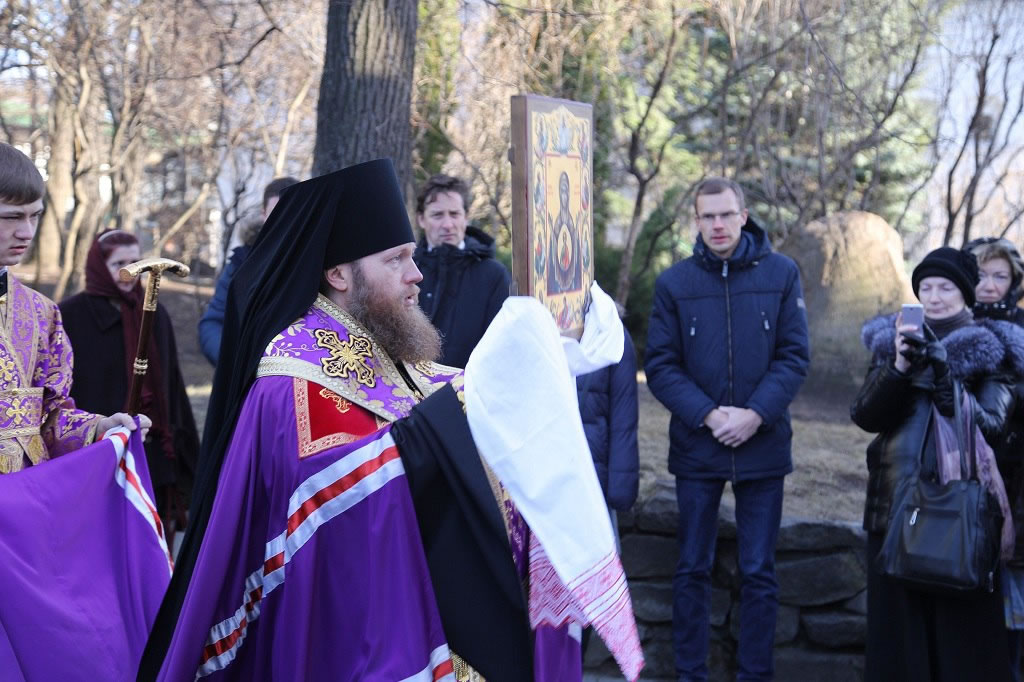Followup notes about the Exhibit, and the renovations to the great monastery itself :
"On Thursday, February 2, 2017, Protopriest Andrei Sommer, Senior Priest of the Synodal Cathedral of Our Lady “of the Sign” in New York and Vice President of the Synodal Youth Department, consecrated a painted copy of the Kursk Root Icon of the Mother of God "of the Sign" in the altar of St Sergius of Radonezh Chapel. Upon the conclusion of the consecration ritual, the copy was placed upon the original Kursk-Root Icon.

synod.com
The newly-consecrated icon will be delivered to Zamensky Church (dedicated to the Znamensky type of icon of the Mother of God, referred to as “of the Sign”) at Novospassky Monastery in Moscow.


Znamenskaya Church is the smaller one to the left of the main Transfiguration of the Savior Cathedral, pictures from internet
Last year, the monastery hosted an exhibition dedicated to the White Movement of Russia, jointly organized with the Union of the Descendants of the Russians of Gallipoli. The exhibition revealed the heroism of the participants of the White Movement, how they continued to struggle against all odds for the Fatherland, even after they found themselves far from Russia, staunchly preserving their ideals and traditions. A special section of the exhibit was devoted to the “Hodigitria of the Russian Diaspora,” the Kursk Root Icon of the Mother of God "of the Sign,” its history, miracles associated with it and its importance to Russian emigres.
In the northwest corner of the Transfiguration of the Savior Church is a chapel devoted to this holy icon. The “Znamensky” image of the Mother of God was also an heirloom icon of the Romanov Dynasty-Tsar Michael Romanov built the church above the burial site of Romanov boyars, his uncles, brothers of Patriarch Philaret, his father: Alexander, Vasily, Mikhail and Ioann Nikitich.
In 1791, the original church was demolished due to its age. Later that year, Prince Sheremetiev built a new church near the site dedicated to the Znamensky Icon of the Mother of God. The new church was designed by the architect Nazarov, a colleague of the renowned master Bazhanov. It was under construction for four years, and on January 15, 1795, was consecrated by Bishop Mefody of Voronezh, the former abbot of Novospassky Monastery.
[ After the war of 1812 ], in 1813, the two-story church was re-consecrated. The lower church contains crypts. Under the altar is the crypt of the Sheremetiev family, and the Lobanov-Rostovsky, Cherkassky, Sitsky and Urusov princely families are likewise buried there.

Old view of Novospassky Monastery, picture from internet
During the first years of the Soviet regime, the monastery was transformed into a woman’s prison, later a “correctional labor camp,” for political and other prisoners. Znamensky Church was turned into a crowded building of prison cells. In the 1930’s, during a new wave of oppression, death-row prisoners were taken to Znamensky Church allegedly for medical treatment but executed there instead. After World War II, the building was turned into an alcohol-rehabilitation center. In 1967, thanks to renowned artist Pavel Korin, the clinic was closed. Interior restoration work is now under way."
http://www.synod.com/synod/eng2017/2017 ... assky.html
When looking for suitable illustrations, I came across a site which listed the address of the grand Monastery as :
" Peasant Sq. № 10, Moscow "
Surely, however, given all the Romanov boyars and other nobility buried here, the name should swiftly be changed to
"Aristocrat Square, No 10 ". Otherwise, who will be able to find this repository of royalty and nobility of earlier centuries ?!
Don't forget that Grand Duke Sergei Alexandrovitch has a special tomb there, not written up in the tourist literature.
The last year I was over there, a special room with its own narrow entrance had been prepared but was only open I think two days out of the year. One was the martyrdom of his wife, Grand Duchess Elizabeth - July 18 - which date I happened to be at the Monastery and was able to peek inside.
Photos were firmly forbidden, however. My camera was barely raised when an arm of one of the handful of people visiting the vault darted out like a bolt of lightning to block the view of the lens !
Now, judging from a recent picture, a new area must have been prepared, for this space is MUCH larger. The previous vault was barely wider than the narrow tomb :

The monastery around 1912, only 5 years before "the deluge" which would destroy this pearl amongst the great monasteries of Moscow. It is highly appropriate that the Znamensky Church in this particular cloister is to house the new center for studies of the White Movement which valiantly strove to free Russia from the Red Yoke.
Looking forward to seeing the finished renovations and new center to educate the Russian public as well as visitors from all over the world about this little-known, vastly under-appreciated chapter of history.





